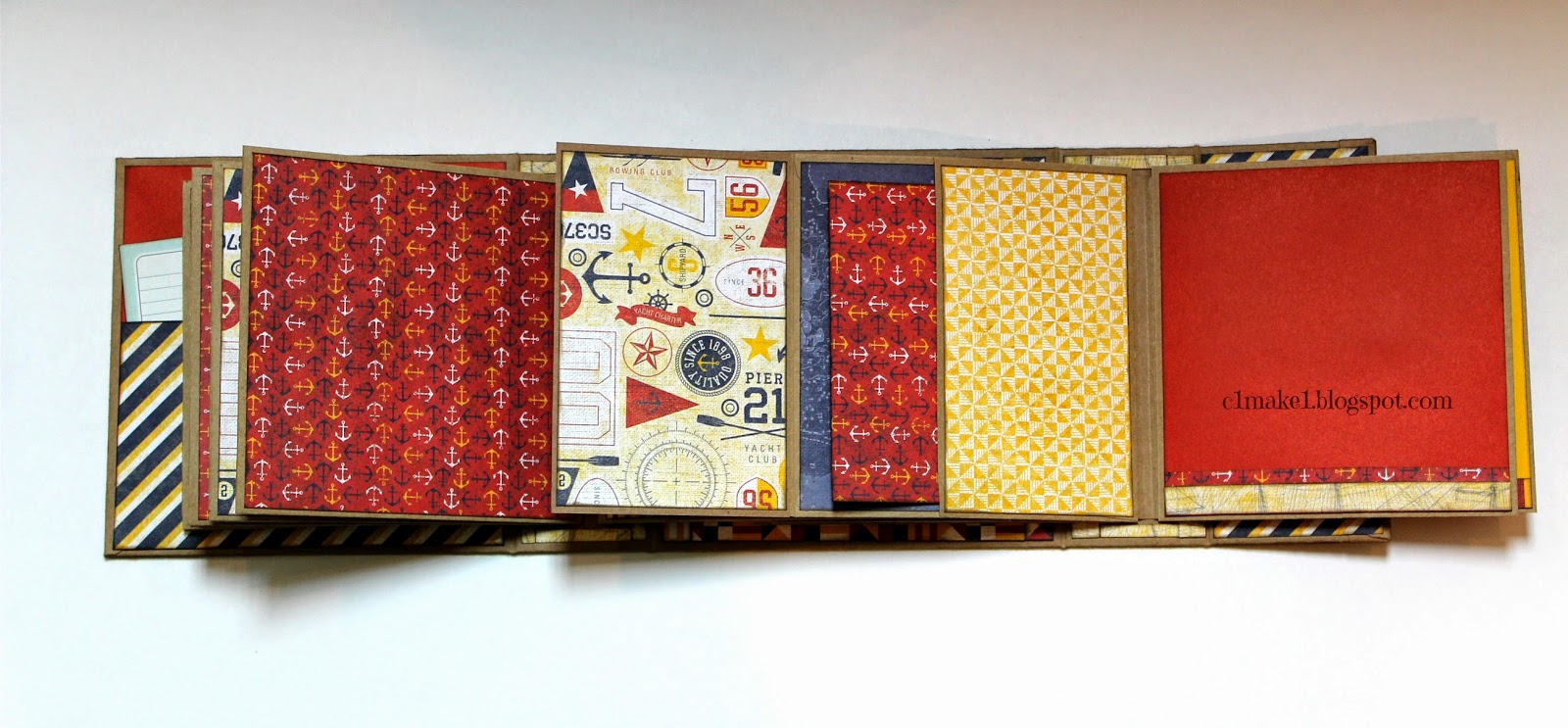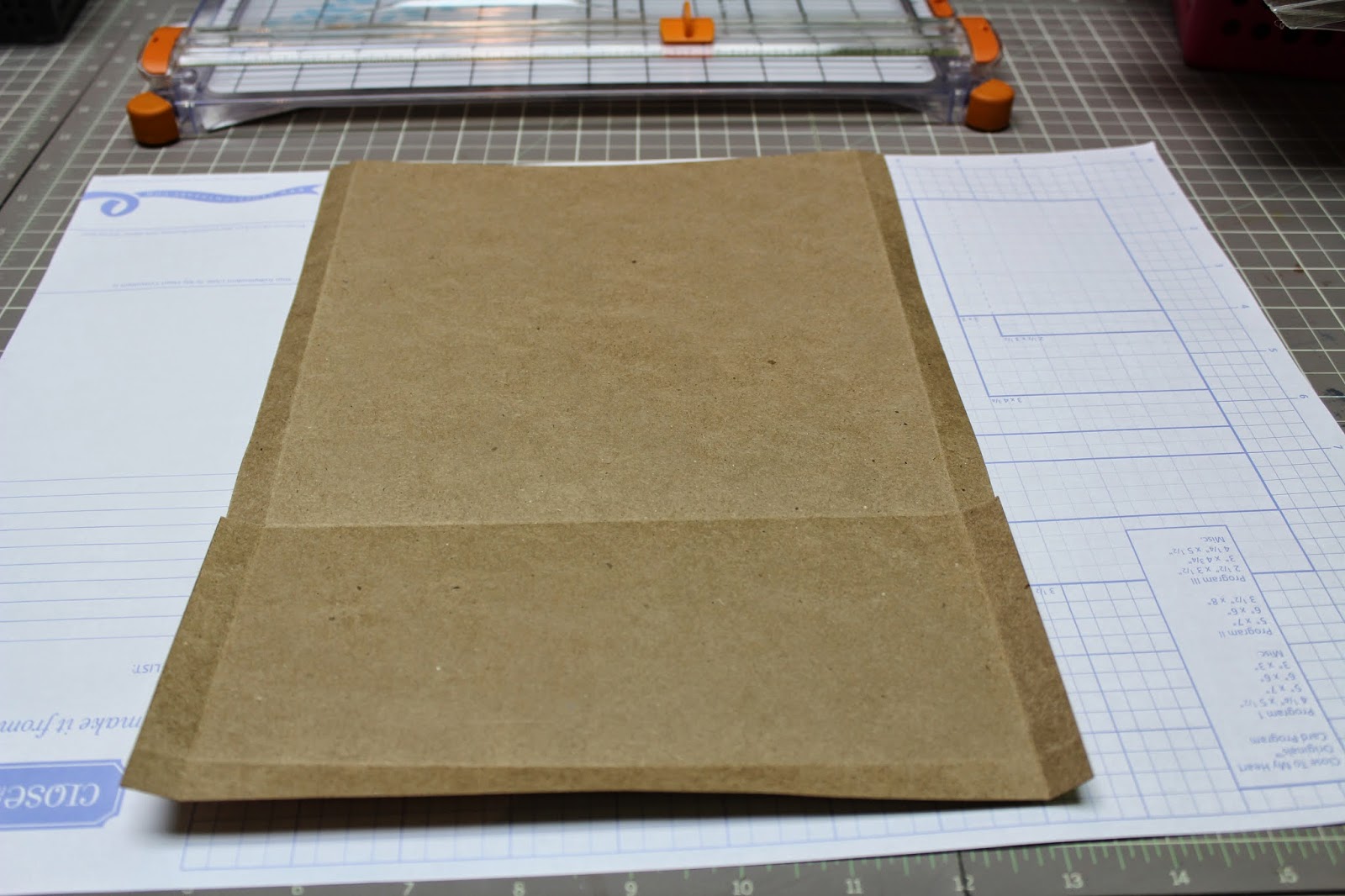Hello Everyone! Welcome to C1Make1.
I have had lots of questions about how I build my mini albums. There's a ton of stuff on YouTube about how to build pages, but I thought I would share here how I make base pages for mini albums like my "Babycakes" binder album and my "Friends" mini album, featured in previous posts. This page construction can be made any size you like and used with any binding system you prefer, so it's versatile and easy. Both good qualities, I'm thinking. I use these base pages and add fold-outs, pockets, double pockets or any other type of additions that I want to customize my albums.
First of all, decide what size you want your pages. For example, a 9" x 9" album would generally have 8" x 8" or 8 1/2" x 8 1/2" pages so that they fit nicely inside the covers. An album where you want to decorate the pages with 6" x 6" paper would generally have pages 6 1/2" x 6 1/2" or 7" x 7" and a cover that's about 7 1/2" x 7 1/2" or slightly larger. You can adjust these measurements depending on whether your pages will have tabs, or if you just want more or less of the cover extending beyond your page edges.
To make a basic page, without additional pockets or flaps:
To make a sturdy, double-thickness page that also functions as a large pocket, cut one piece of paper 1" bigger (in one direction) than your desired page size. This leaves 1/2" on either side for tabs to which you'll attach the other half of the page. For example, for an 8" x 8" page, cut a piece of cardstock that is 8" x 9". With the 9" side at the top of the scorboard, score it at 1/2" and 8 1/2". If you were doing a 5" x 7" page with a landscape orientation (wider than it is tall), you'd cut your piece at 5" x 8" and score on the 8" side at 1/2" and 7 1/2". A portrait orientation (taller than it is wide) of a 5" x 7" would be cut at 6" x 7" and scored on the 6" side at 1/2" and 5 1/2". Your flaps are always created by scoring 1/2" from the left and right edges of your paper, regardless of page size. Your binding system will determine which way your pocket opens.
Paper cut and scored, then tabs in folded position.
Once you've decided on page size, and cut and scored your paper, fold on the score lines. Apply double sided tape on the tabs while they are in the folded position. (see picture above) Trim the ends of each tab on an angle once you have the tape in place.
Cut a second piece of cardstock the desired size of your page; for an 8" x 8" page, this piece will be cut at 8" x 8". For a 5" x 7" page, this piece would be cut at 5" x 7".
Pull the backing off the tape on your flaps, and attach your second piece of cardstock, one side at a time, being careful to line up the edges on all sides. This forms a cardstock "tube" as shown below.
This is your base page, open on both ends. The sides with the flaps become your closed edges, and the other two edges can be left open to form pockets, attach to hinge systems, or can be glued closed later. You can see that simply by changing the placement of the open edge in your book, you have either a top loading pocket or a side loading one, and can use either opening on a portrait orientation or a landscape orientation page. If you want to use it with a hidden hinge or "stack the deck" binding system, leave the two ends open and use one of them to attach to the hinge.
I'll put some links at the end of this post to sites where you can see different binding systems.
To make a basic single page with a pocket:
Here's an example of a pocket page (right side) from my Babycakes album.
Cut a piece of cardstock that is 1" wider than your desired page width and is 3 or 4" longer than your page length. In this example, I cut the paper at 9" x 12" for an 8" x 8" page. I scored it at 1/2" and 8 1/2", then flipped it to the 12" side and scored it at 8" and 11 1/2".
Trim out the corners of the bottom edge as shown above. Then cut on the 8" line in just to the 1/2" score mark on the left side and to the 8 1/2" score line on the right side. This gives you a flap at the bottom, and one on each side. The long side edges will now be divided into two flaps, one is 8" long, the other 4".
Place double sided tape on the bottom flap in the open position and trim the ends on an angle.
Remove the tape backing and stick the flap down.
Place double sided tape on the bottom short side flaps in the folded position. Trim the ends at an angle as you did for the previous flap. Fold on the 8" score line, remove the tape backing and fold the bottom piece up, with tabs in the folded position, attaching it to the top portion of the piece as shown in the photos below.
Divided flap created by cutting along the 8" score line just to the 1/2" and the 8 1/2" score lines. The short tabs on the bottom are in the folded position, and the longer tabs on the top portion are in the open position.
Flaps in the folded position.
Tape on the flaps in the folded position.
The resulting pocket, which has a flap running vertically down both edges. You will apply double sided tape to these remaining flaps while they are in the open position.
Apply double sided tape to the long tabs while they are in the open position. Then flip the entire page over so that the pocket is underneath and the long flaps are up. Fold the tabs up towards you. The tape should be facing you when the tabs are in the folded position. Cut a second piece of cardstock at 8" x 8" (or the desired page size). Remove the backing from the tape on the flaps of the first piece. Attach the second piece of cardstock to the tabs of the first piece just as you did for the plain page. You now have a page that is a large pocket, plain on one side, with a smaller pocket on the other, and open on both ends. Use a thin bead of glue on the bottom open edge of the page where the small pocket sits, leaving the top edge of the page open.
Thin bead of glue in place in bottom edge of page.
Here's another example of finished pocket pages. The left and right sides are closed because they're the ones where the flaps attach the two pieces of cardstock together. The top is open and becomes the opening of the pocket page. The bottom edge of the page has been glued shut forming a large pocket the size of the entire page. It holds a large tabbed mat. The small pocket part of the page is created when you fold the first piece of cardstock back on itself and attach the flaps as in the directions above.
And that's how I make my pages. They can be any size, and of portrait (vertical) or landscape (horizontal) orientation. They work with any type of binding system. I've added some links below so you can explore some of the different binding systems out there.
You can check out Kathy Orta's hidden hinge system directions here .
Or try the "stack the deck" system by Laura Denison which you can learn all about here .
Or if you want even MORE about binding systems, how about this one here .
I hope you have fun with inventing your own mini albums, and if you have any questions, feel free to contact me and I'll try to help. Happy scrappin' everybody! Now get on out there and glue something!




















.jpg)
.jpg)
.jpg)






























